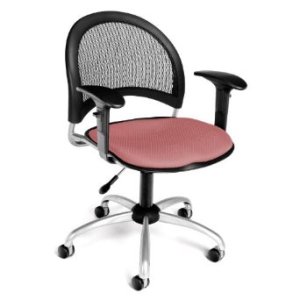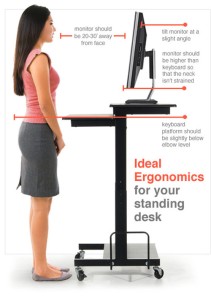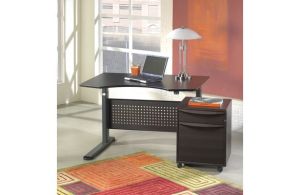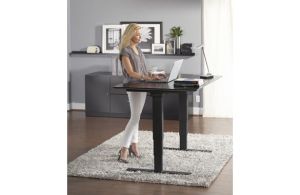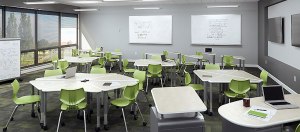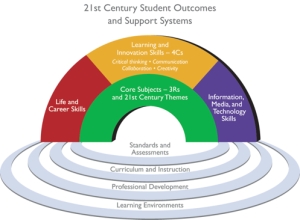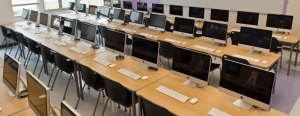ProAcademy Furniture appreciates teachers around the world! We always make it a point to remind educational facilities that teachers need support and comfort when it comes to classroom furniture just as well as the students. The Moon Swivel Chair provides just that! It’s fun design isn’t just for show, it is also very comfortable and provides great support for teachers when they are on down time or working at their desk. Check out the Moon Swivel Chair and other teacher chairs on http://www.proacademyfurniture.com
optimism


Benefits of Standing Desks
Sitting for prolong periods of time (more than 6 hours per day) puts you at an increased risk of diseases including diabetes and heart disease.
A SIT-STAND DESK WILL:
- Jump start your metabolism
- Promote healthier joints and spine
- Relieve back and shoulder muscle pain
- Help you feel better and more awake
- Contribute to better posture
Prolonged sitting often contributes to back and shoulder pain. When the spine is inactive for long periods of time, posture and physical condition worsen. Joints do not receive adequate blood supply when you are inactive. When joints move, they let nutrients in and waste is pumped out. Frequent physical movement is important for the health of your spine and discs.
Being focused at work is admirable. But too often we don’t realize how long we have been sitting in the same position. Problems from prolonged sitting can be easily addressed with a sit-stand desk. Alternating between a standing and sitting position is the best option for a healthy work environment.

Spring has Sprung!

7th Annual New Jersey Charter Schools Conference Raffle Winners!

STEM-Centric Learning 101
What is STEM-centric learning?
STEM education is active and focuses on a student-centered learning environment. Students engage in questioning, problem solving, collaboration, and hands-on activities while they address real life issues. In STEM education, teachers function as classroom facilitators. They guide students through the problem-solving process and plan projects that lead to mastery of content and STEM proficiency. STEM proficient students are able to answer complex questions, investigate global issues, and develop solutions for challenges and real world problems while applying the rigor of science, technology, engineering, and mathematics content in a seamless fashion. STEM proficient students are logical thinkers, effective communicators and are technologically, scientifically, and mathematically literate.
To make your classroom STEM friendly, contact us today and we can create the perfect design for your facility’s needs.
info@proacademyfurniture.com
www.proacademyfurniture.com
info provided by: mdk12.org

Happy National Pack Your Lunch Day!
HAPPY NATIONAL PACK YOUR LUNCH DAY!
YUM. We’ll take two of these!

Top 10 Characteristics of a 21st Century Classroom
Top 10 Characteristics of a 21st Century Classroom
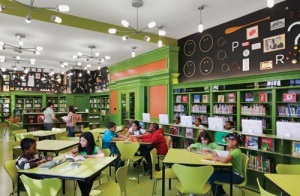
Student-centric: In these classrooms, students play an active role in their learning and teachers serve as mere guides. They are more facilitators of learning than lecturers. They help students think critically and learn by doing and act as a resource while their students discover and master new concepts. Student-centric classroom environments put students’ interests first and are focused on each student’s needs, abilities and learning styles.
Computing devices: Computers are readily available in modern classrooms, since they are essential tools for 21st century students and replace the utilities of pen and paper. They not only give students the means to conduct online research and master the technology skills they need, but they also give teachers the opportunity to enhance their lessons. The ability to deftly operate a computer is a critical 21st century skill. Computing devices greatly assist in teaching and learning and make them more engaging and effective.
Active learning: In modern classrooms, students are actively engaged in what they learn. Students participate in more active learning by working in groups or on computers and complete projects and other interesting activities that help them discover new skills. Students can learn actively by talking and listening, writing, reading and reflecting. When students are encouraged to take an active interest in learning, they are more likely to retain the knowledge they’ve accumulated.
Adaptive learning: Any classroom will always have students of different types of learning abilities in it which often makes it difficult for teachers to make sure that all of them understand the concepts. The modern approach of adaptive learning gives students the freedom to learn at their own pace and in the way they are most comfortable with. There are various kinds of software available for adaptive learning that teachers can use to enhance the learning of their students.
Invitational environment: The classrooms should not be cramped or overcrowded. Modern classrooms should have the basic material required for teaching such as, interactive whiteboards and LCD projectors. The BYOD (Bring-Your-Own-Device) approach can be adopted, so that students can bring their laptops or tablets to the classroom for better personalized learning. Teaching with technological material is more effective, stimulates student engagement, eases the work of teachers and makes it easy for students to focus on learning.
Students understand and follow the rules and procedures: The learning environment is carefully planned and well-organized. Class rules, procedures, and notices of upcoming activities are posted in convenient places to help students stay on track. Students are constantly encouraged to remind them of their goals and responsibilities. They follow class routines and understand what they are expected to achieve each day and how they are to go about it.
Mutual respect: Teachers and students should always have respect for each other. As now the role of teachers is no longer to be the sage on the stage, students should not forget their value as they will always receive guidance from them. Also, teachers should encourage students to speak with confidence and value their opinions. In a well-disciplined environment, students should also co-operate with and respect their classmates.
Students take responsibility of their learning: As students are encouraged to actively participate in their own learning, they become responsible for their learning. Self-directed students not only encourage each other, but also work with their teacher to achieve academic and behavioral goals that they themselves have helped establish. Teachers should employ a variety of strategies to promote responsible decision-making and create self-reliant students.
Performance-based assessments: Regular performance-based assessments are carried out by teachers through various methods which are not restricted to tests. These can be by conducting quizzes and polls. Teachers can utilize projects as well as other products and performances as assessments to determine student achievements and needs. Assessments are tailored to the abilities and needs of the students.
Collaborative learning: Learning through collaboration is one of the most effective forms of learning. Teaching and learning in isolation are very restrictive and hinder progress. Learning in groups enhances the scope of learning and develops critical thinking. Collaborative learning activities include collaborative writing, group projects, joint problem solving, debates and more. Collaborative learning redefines traditional student-teacher relationship in the classroom.
Information courtesy of: http://edtechreview.in/news/862-top-10-characteristics-of-a-21st-century-classroom
To create your 21st Century classroom visit http://www.proacademyfurniture.com

21st Century Education Movement
[The 21st Century Movement]
ProAcademy supports the 21st Century Education movement. We transform retired styles of classroom setups and create an environment that assists the student in exploring their intellectual growth.
The new millennium was ushered in by a dramatic technological revolution. We now live in an increasingly diverse, globalized, and complex, media-saturated society.
Today’s kindergartners will be retiring in the year 2067. We have no idea of what the world will look in five years, much less 60 years, yet we are charged with preparing our students for life in that world. Our students are facing many emerging issues such as global warming, famine, poverty, health issues, a global population explosion and other environmental and social issues. These issues lead to a need for students to be able to communicate, function and create change personally, socially, economically and politically on local, national and global levels.
Even kindergarten children can make a difference in the world by participating in real-life, real-world service learning projects. You’re never too young, or too old, to make your voice heard and create change that makes the world a better place.
Emerging technologies and resulting globalization also provide unlimited possibilities for exciting new discoveries and developments such as new forms of energy, medical advances, restoration of environmentally ravaged areas, communications, and exploration into space and into the depths of the oceans. The possibilities are unlimited.
[21st Century Skills]
21st Century Schools, LLC recognizes the critical need for developing 21st century skills. However, we believe that authentic education addresses the “whole child”, the “whole person”, and does not limit our professional development and curriculum design to workplace readiness.
21st century skills learned through our curriculum, which is interdisciplinary, integrated, project-based, and more, include and are learned within a project-based curriculum by utilizing the seven survival skills advocated by Tony Wagner in his book, The Global Achievement Gap:
Critical Thinking and Problem Solving
Collaboration across Networks and Leading by Influence
Agility and Adaptability
Initiative and Entrepreneurialism
Effective Oral and Written Communication
Accessing and Analyzing Information
Curiosity and Imagination
Let us recreate your classroom today!
www.proacademyfurniture.com
info@proacademyfurniture.com
Info provided by 21stcenturyschools.com

We’re ready for Summer!
This looks heavenly right now. We’re ready for Summer, how about you? Can you hear the seagulls and smell the ocean air? Ok, maybe it’s wishful thinking but until then we can dream! #summer2015 #summertime#summerfun #ocean #beach #relaxation #proacademyfurniture

Public vs. Private vs. Charter
As of the 2010-2011 school year, our country had a total of nearly 99,000 public schools; these elementary, middle, and high schools all operate with the help of tax dollars. Most of them are traditional schools with educational standards set by each state. Best of all, the education is free.
Because public schools are reliant on federal, state, and local tax dollars, funding can be cut. Also, public schools have to follow state guidelines on what they can teach and how children are evaluated.
Charter schools offer an institutional hybrid. Like traditional public schools, charter schools are free, and they can’t discriminate against students because of their race, gender, or disability. However, parents must usually submit a separate application to enroll a child in a charter school, and like private schools, spaces are often limited. Charter schools are independently run, and some are operated by for-profit private companies.
However, charter schools are still funded by government coffers and accountable to the government body — be it state, county, or district — that provides the charter. (Many successful charters do substantial additional fundraising as well.) If a school is mismanaged or test scores are poor, a charter school can be shut down.
On the other hand, most private schools depend on their own funding, which may come from parents through tuition, grants, donations, and endowments. Private schools also often actively seek money from alumni, businesses, and community organizations. If the school is associated with a religious group, as is the case with Catholic parochial schools, the religious organization — like the Catholic Church — may be an important source of funding as well. Finally, in areas with a voucher system, some private schools are primarily funded by tuition paid for by a voucher from the state.
